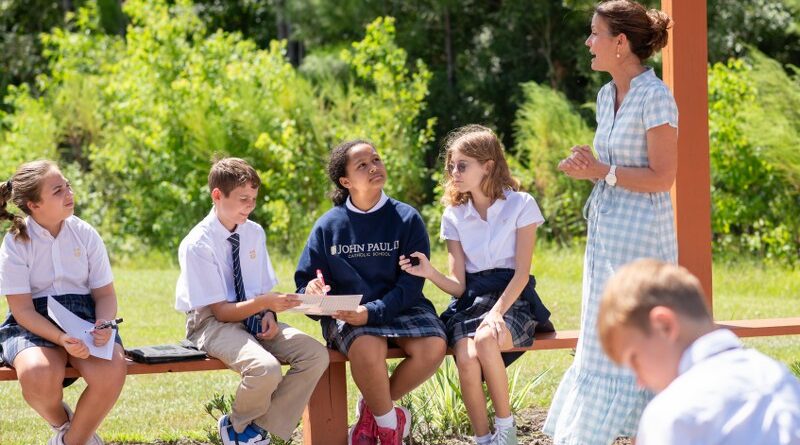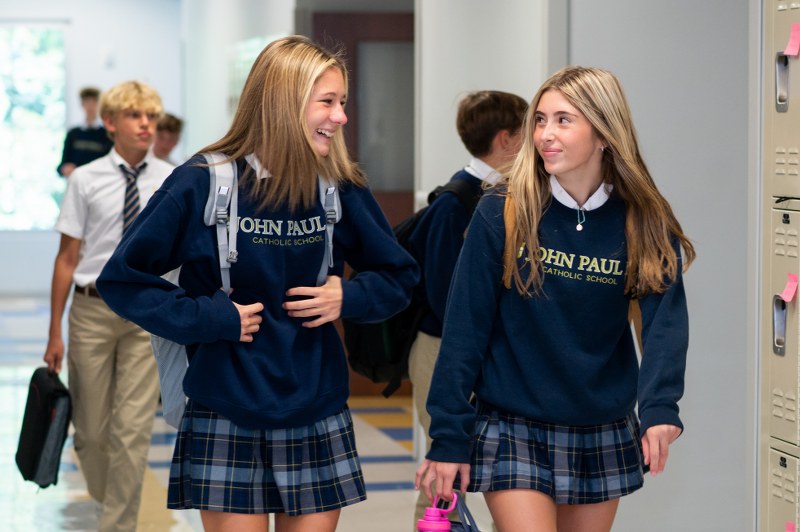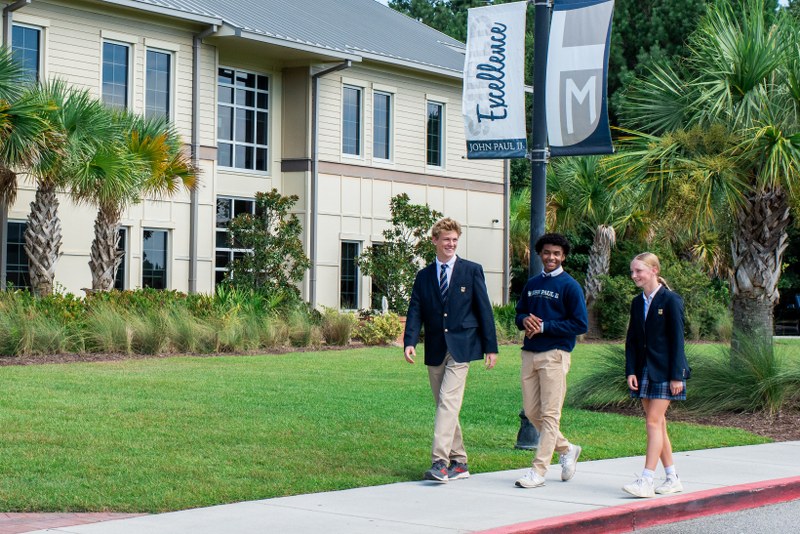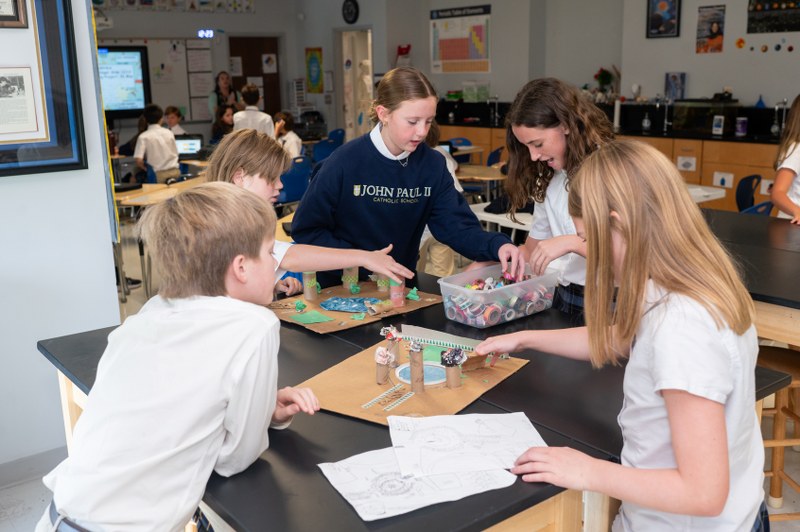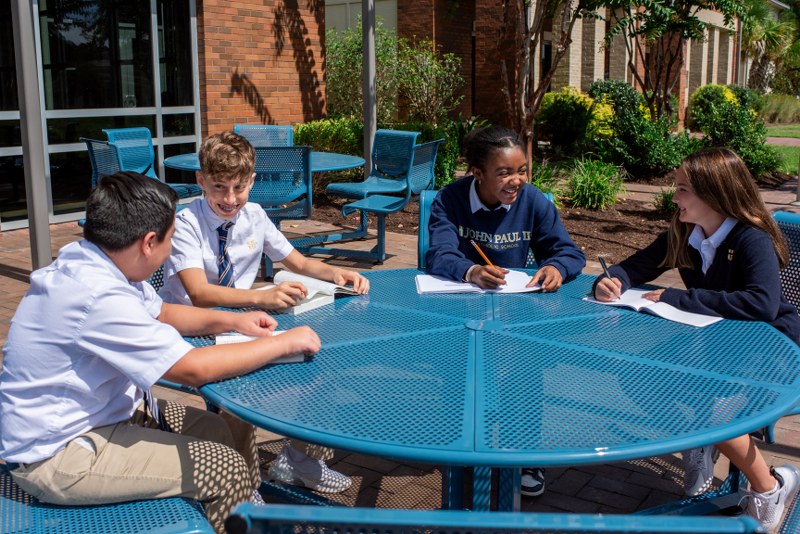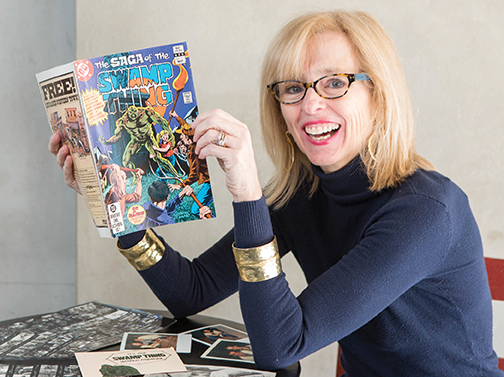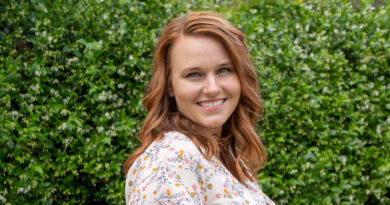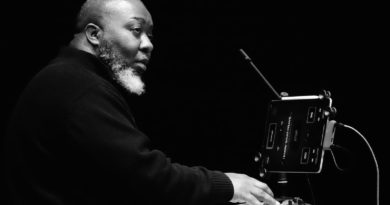JOHN PAUL II CATHOLIC SCHOOL
Stellar Academics and Strong Culture
story by JEANNE REYNOLDS photos by CHARLOTTE BERKELEY
Which came first: the chicken or the egg?
Or in the case of John Paul II Catholic School in Okatie: outstanding academic programs or incredibly rapid growth?
For JPII, the answer to that classic conundrum is both. Enrollment in the private, Catholic middle and high school this fall is exponentially higher than when it opened 11 years ago with just 57 students in three grades. And not least among the attraction for students — and their parents — is the school’s stellar academic focus.
Creating an academic program that could draw students in has been the goal since JPII President John McCarthy was enticed out of retirement to lead the school five years ago.
“Our Advanced Placement program is what we’re hanging our hat on,” John says. “We offer 22 college-level AP courses, including the prestigious Capstone Diploma. That’s phenomenal for a school our size.”
It’s also earned the school recognition as a College Board Platinum Level School, an achievement accomplished by only 6% of all high schools across the U.S. and Canada. Even more impressive is the percentage of students taking these College Board-approved courses and the rate at which they succeed: 54% of JPII’s high school students enrolled in at least one AP course in 2024, with an exceptional 78% pass rate. Compare that to approximately 35% of public high school students nationwide who take at least one AP exam and 63% who pass. And while some schools may boost their results by curating the students allowed to take these high-level courses or making the final exam optional, JPII encourages all interested students to challenge themselves.
“We accept everybody if they’re willing to work hard,” John says. “We don’t impose artificial barriers to any student choosing to enroll in AP, and all students enrolled in an AP course are required to take the test.”
The school’s strong academic focus has led to another impressive stat: a 100% college acceptance rate two years in a row, including entry into top academic schools, such as Duke, Wake Forest, and Notre Dame.
“Our students have a lot of support,” John says. “We have four counselors — that’s a 100:1 student-counselor ratio compared to a national average of more than 300:1. And we have three special educators who can provide more support to enable students to succeed.” More than 18% of JPII students are on a student support plan, he adds.
And in true chicken-and-egg mode, motivated students are in turn attracting high-quality teachers.
“People want to work here,” John says.
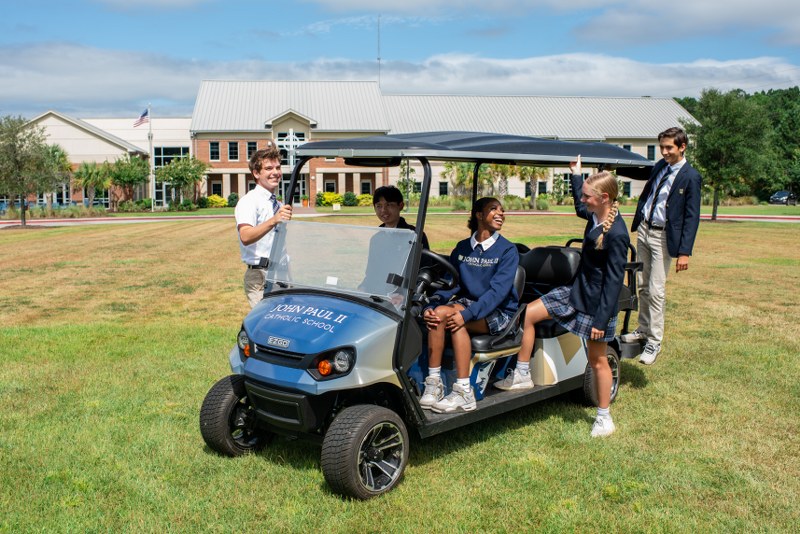
OPEN DOORS TO OPPORTUNITY
JPII’s academic program makes it an exceptional value, John says — although admittedly one still beyond the resources of many families in the area.
“When I first arrived, I thought we needed to do a better job attracting diverse students, to be more inclusive of the community around us,” he says. “To do that we needed to increase scholarship opportunities for those who’d never be able to afford to come here otherwise.”
That led to the creation of the Promise Scholarship program. “We worked to find a donor who would support one or more students by paying 50% of the tuition, and the school would match the other 50%. We started with two and now we have 13.”
Which, in turn, led to more scholarships. St. Anthony’s Educational Fund is sponsoring 10 students, and the Daughters of Charity provided a $500,000 grant to increase racial diversity. The enrollment numbers show progress toward diversity: The student gender ratio has shifted from two-thirds male and one-third female to almost 50-50 in the last five years, while the number of students from non-Catholic backgrounds continues to grow. JPII welcomes students of all faiths.
HIGH-SPEED EXPANSION
Students, parents, and teachers are clearly seeing the value of what JPII offers. Enrollment has grown every year, jumping from 360 last school year to 410 this year. That growth has been both intentional and critical to the school’s long-term success — and it comes with a big price tag.
“We have to be a certain size to be financially viable,” John says. “Our tuition is below some of our competitors, and we have to be big enough to keep it affordable and our student body diverse. Expanding our facilities will allow us to grow.”
Key components of the master expansion plan include:
• Innovation Center — A 48,000-square-foot STEAM (science, technology, engineering, arts, and math) building will become the main high school building, housing up to 340 students in grades 9–12. The school’s current building will become the middle school, bringing the total 6th through 12th grade enrollment to 540. The first floor will feature three state-of-the-art science laboratories, a large art studio, a “makerspace,” and a collaboration studio where the arts and sciences can integrate, a large commons with four smaller collaboration studios, administrative and counseling offices, and a lack box theater as well as a dedicated music and theater classroom. The second floor will include eight learning studios, most with folding walls and moveable furniture for flexibility. The building will feature a café and the “Grand Stair” — a place where students can gather, perform, or just have lunch. “When completed, the building will have no rival among any found in the Lowcountry,” John says.
• Black Box Theater — The multipurpose black box theater will feature retractable seating for more than 200 people, a movable stage, and performance-quality lighting and sound, enabling it to serve as both a presentation and performance space. The space will provide a home for theater productions as well as extracurricular sports and activities, such as cheerleading, robotics, and even drone flying.
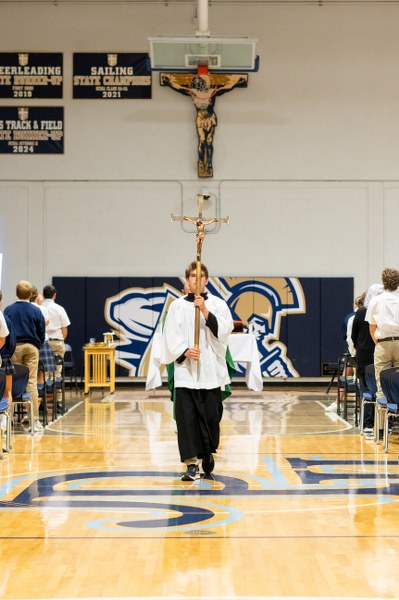
• Makerspace — The makerspace will promote hands-on collaboration and foster creative problem-solving for students learning engineering, electronics, woodworking, sewing, painting, design, and laser-cutting skills. Think old-school shop meeting new-world technology. A garage door will open to the outside for large-scale projects.
• Art Studio — All the school’s students will study visual arts to build mental agility between left-brain/rational and right-brain/intuitive thinking. The art studio will be integrated into the building’s science wing to easily connect creativity and more traditional science courses, such as biology, chemistry, and physics.
• Athletic Enhancements — Once the Innovation Center is constructed, Phase III of the project will see a synthetic turf multisport stadium with a track, field house, and tennis courts; a new softball field; a cross-country trail; lights and scoreboards for all fields; locker rooms; and a fitness center.
• Chapel — Finally, planned for Phase IV, is an 800-seat chapel to serve as the cornerstone of the school’s Catholic identity, as well as accommodate overflow for St. Gregory the Great Catholic Church.
Funding for the ambitious campus transformation is based on a $16 million capital campaign launched last fall and already a little more than halfway toward the goal. Construction should start by next spring with the Innovation Center open by August 2026. Meanwhile, several pieces of the four-phase project have already been completed, including a manned security gate, a new parking lot (“We’re a commuter school with students from Sea Pines to Green Pond and all points in between,” John points out.), a new soccer field and outdoor basketball court, two more modular classrooms, and a kitchen to provide on-site food service.
“We’re at capacity now until the new building opens,” John says. “We won’t be able to take as many new students next year. We’ve never had to turn people away before. It’s going to be very tight next year, and we’re encouraging people to apply early.”
CULTURE OF CARING
Academic challenge and excellent facilities are key to JPII’s growing success, but John says a third component is equally important: culture.
“Sometimes culture is overlooked,” John says. “How do students feel when they’re at school? Students here feel a sense of belonging. They’re valued and they’re ‘seen.’ When you create that culture, you create joy. Our students are happy here. They’re motivated to learn. Students are given this opportunity, and they take advantage of the opportunity.”
“Sometimes the problems around us can seem so overwhelming but look at it one child at a time. If you can change one child’s life, you change the trajectory of a generation.”

